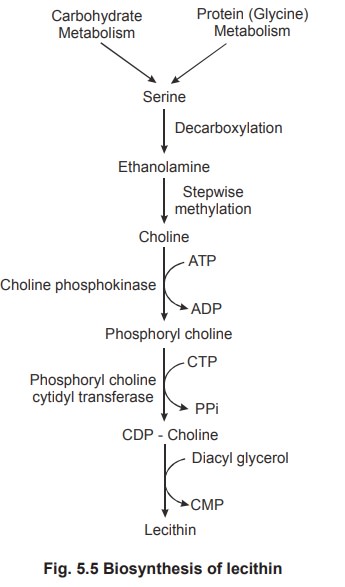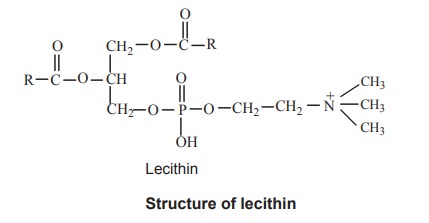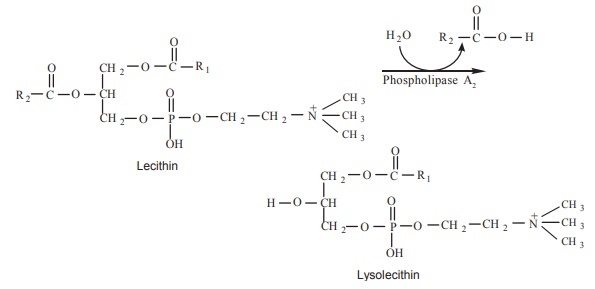Chapter: Biochemistry: Lipid Metabolism
Biosynthesis of phospholipids

Biosynthesis of phospholipids
All tissues synthesize phospholipids, but at
different rates. In all tissues except liver, phospholipids are synthesized,
utilised and degraded in situ; while in liver large proportion of the
phospholipids after synthesis is transferred to the plasma and as a matter of
fact, liver is practically the sole source of plasma phospholipids.
Phospholipids are mainly synthesized from glycerol as detailed below.

1. Biosynthesis of Lecithins
Lecithins are otherwise called as phosphatidyl
choline. The choline component of lecithins is derived by the stepwise
methylation of ethanolamine which in turn is formed by the decarboxylation of
serine. Serine is derived from the pathways of both carbohydrate and protein
metabolism as shown below.


2. Degradation of phospholipids by enzymes
Degradation of phospholipids are effectively
catalysed by a group of hydrolytic enzymes known as phospholipases.
Phospholipases are classified into four major types namely phospholipase A1,A2,
C and D. The classification is based on their cleavage specificity.
3. Lysolecithin formation
Lecithin is hydrolysed by the enzyme
lecithinase. The lecithinases are also known as phospholipases. When lecithin
is acted upon by the enzyme phospholipase A2 it is converted into
lysolecithin and a free fatty acid.

Lysolecithin may also be formed by an
alternative route involving lecithin cholesterol acyl transferase. This enzyme
is synthesized in liver and found in plasma in appreciable amounts. This enzyme
transfers the fatty acid moiety from the lecithin to the cholesterol to form
cholesterol ester. Lysolecithin accounts much of the cholesterol ester in
plasma.

4. Effects of lysolecithin
Lecithinases are specific enzymes which
hydrolyse lecithins to form free fatty acids, glycerol, phosphoric acid and
choline. A lecithinase in cobra venom readily split off an unsaturated fatty
acid in lecithin producing “lysolecithin”. As the name implies, lysolecithin is
a potent red blood cell hemolysing agent. This is the explanation of the
toxicity of snake venom, bee-sting and certain poisonous spiders.
Related Topics